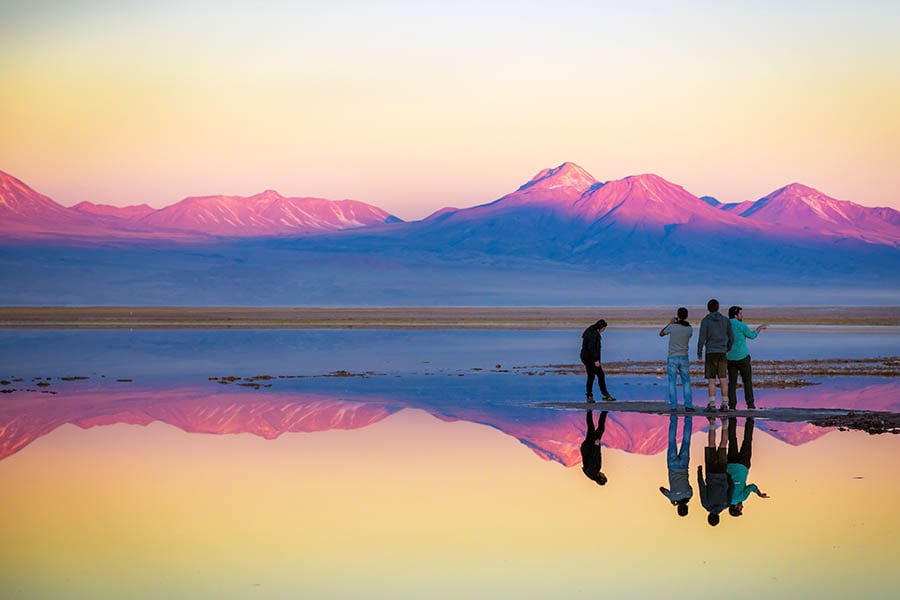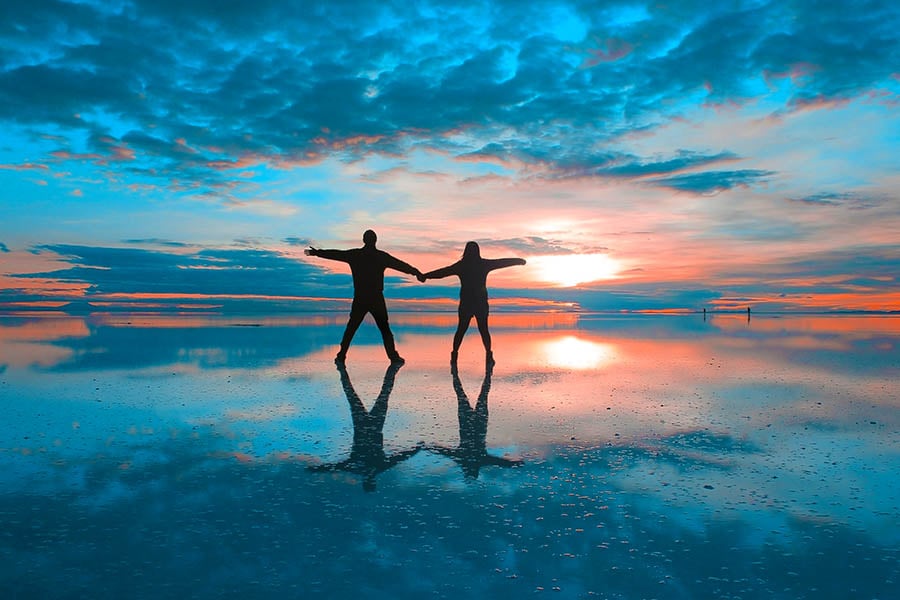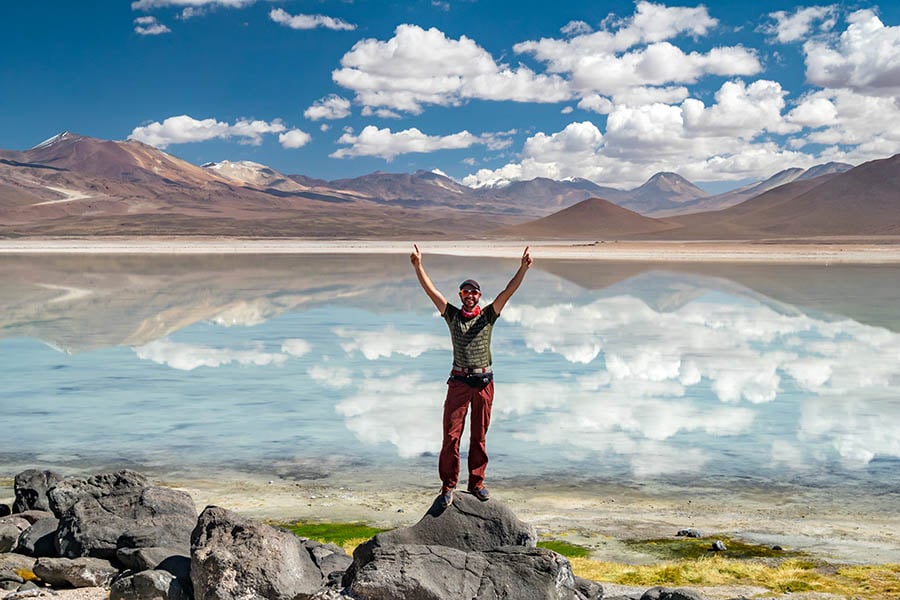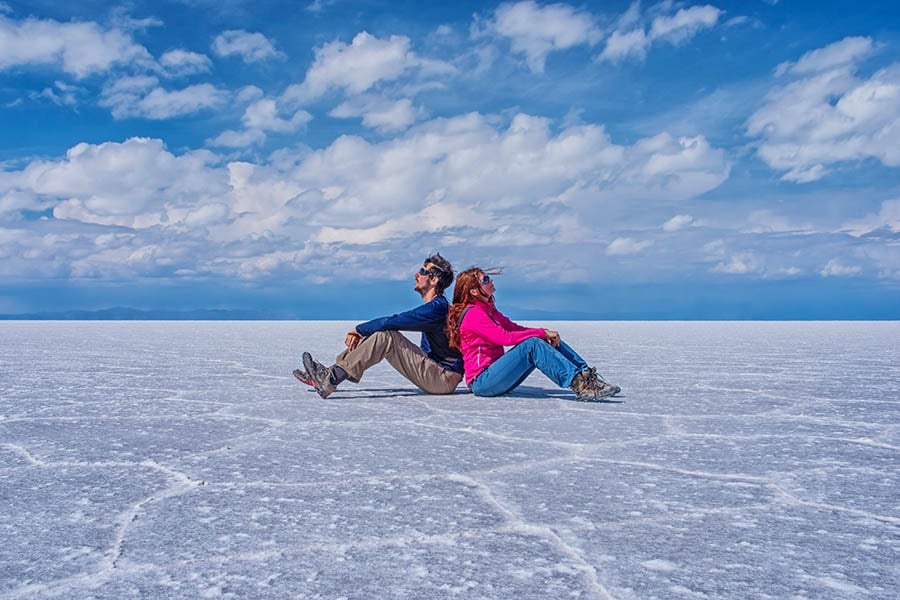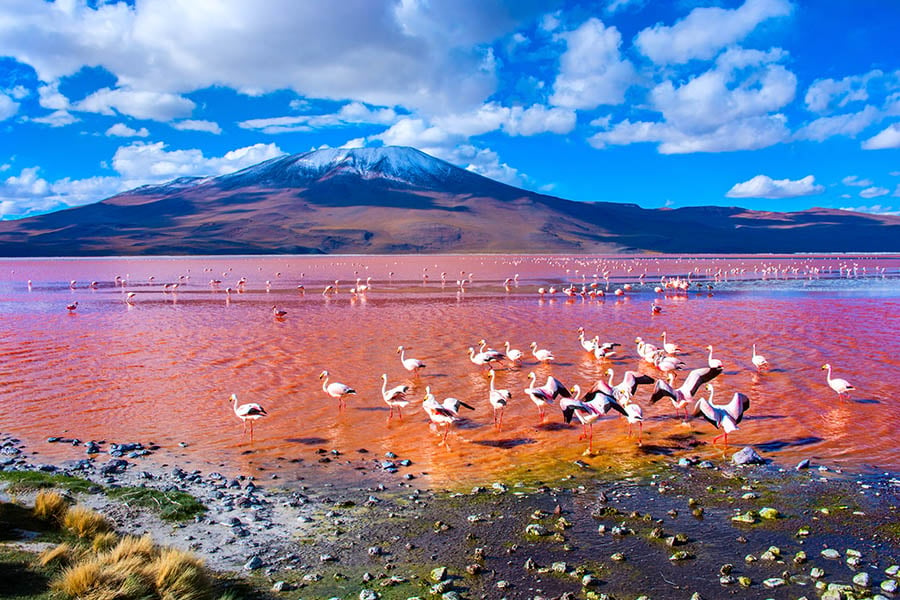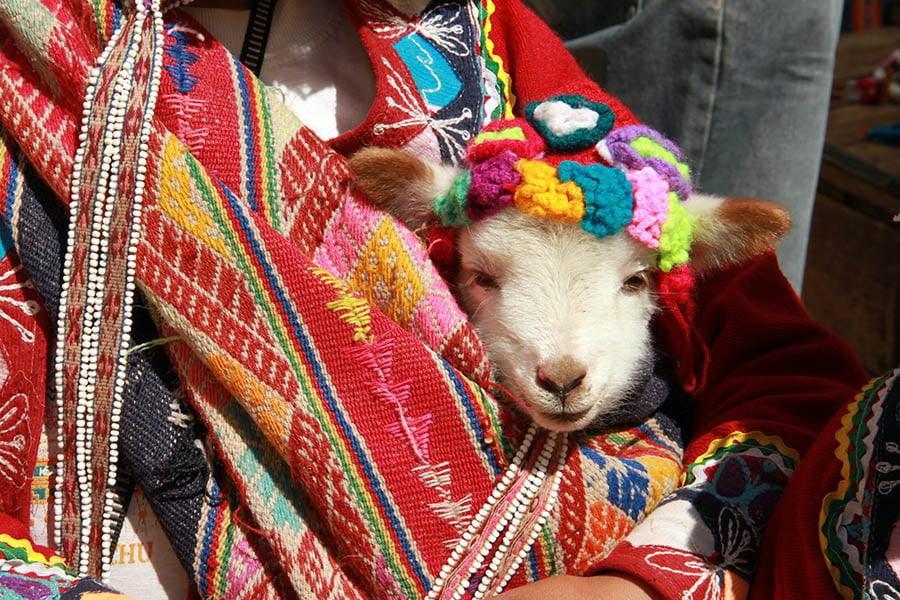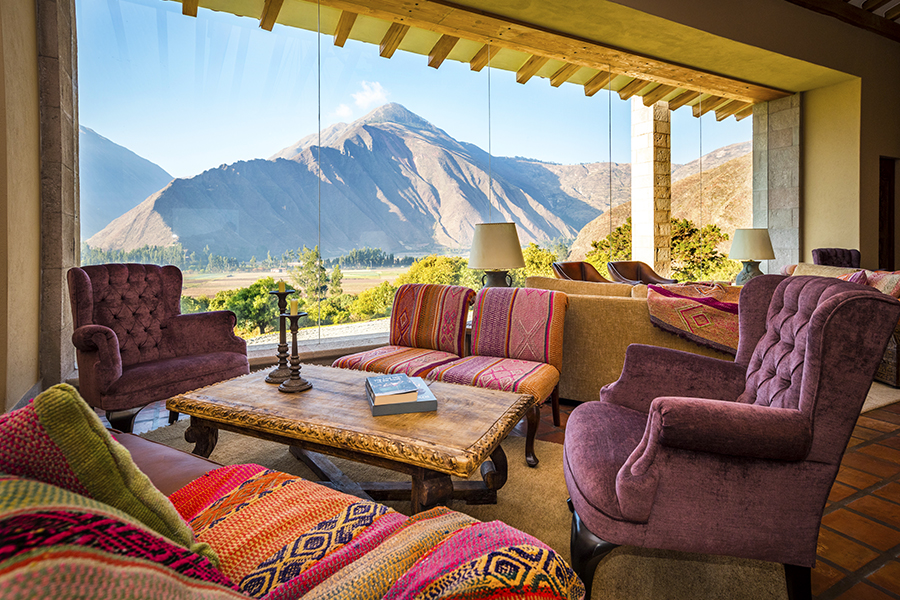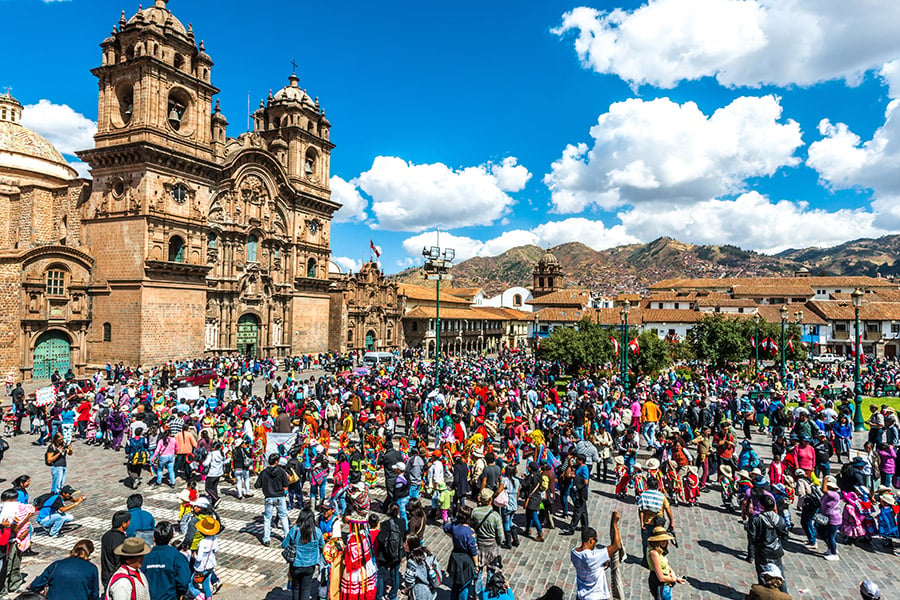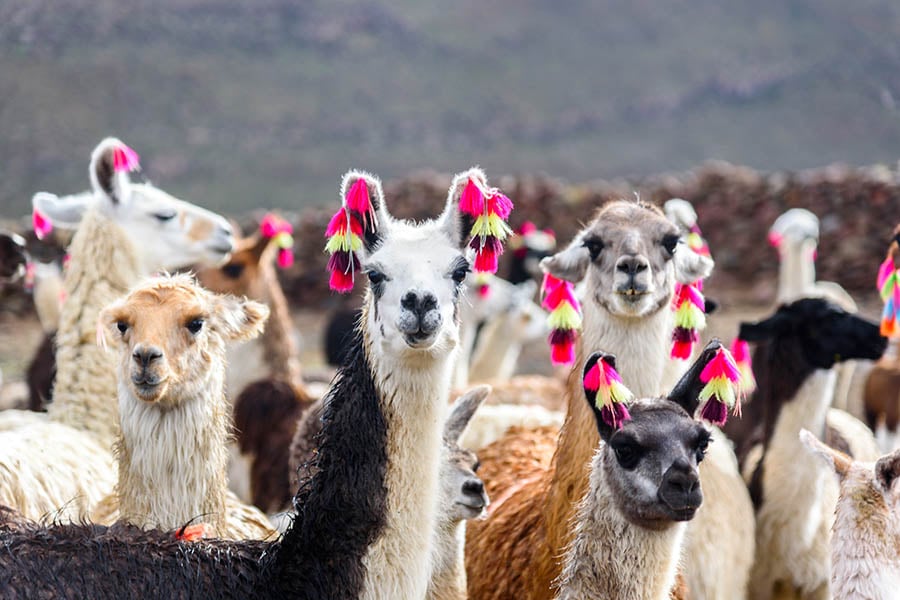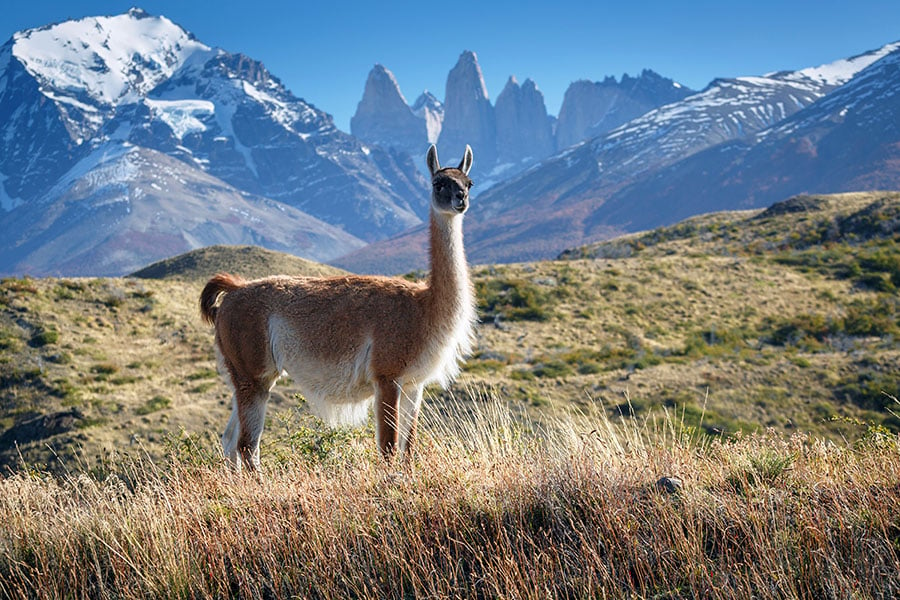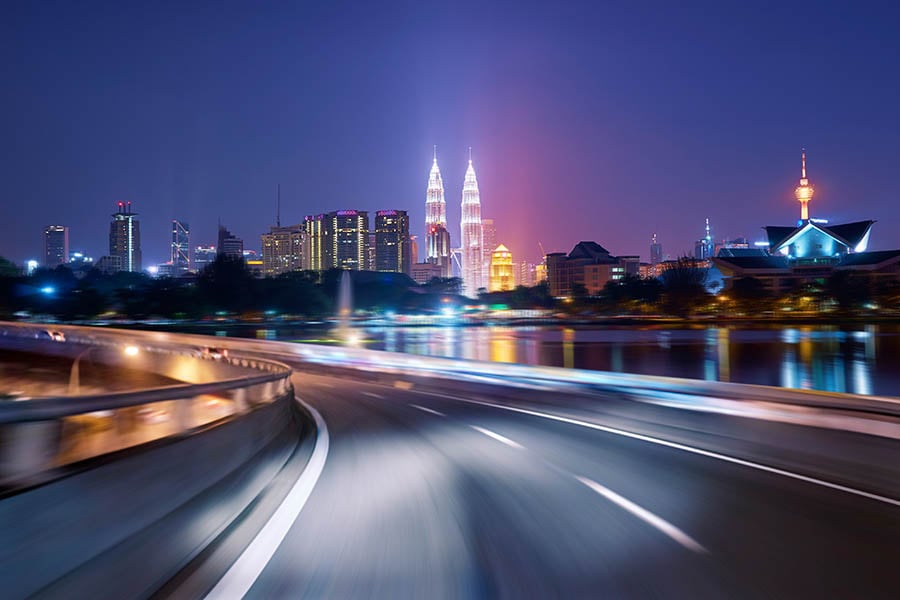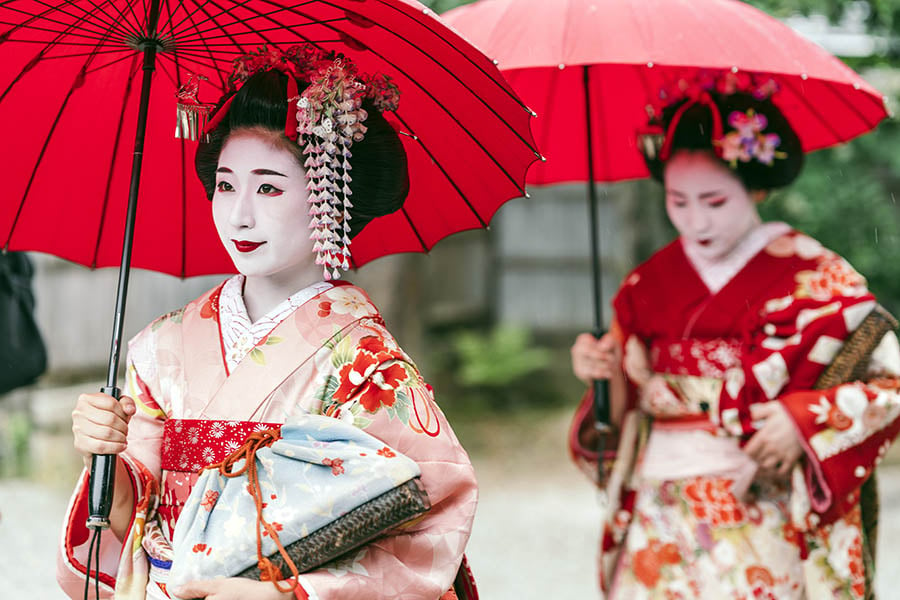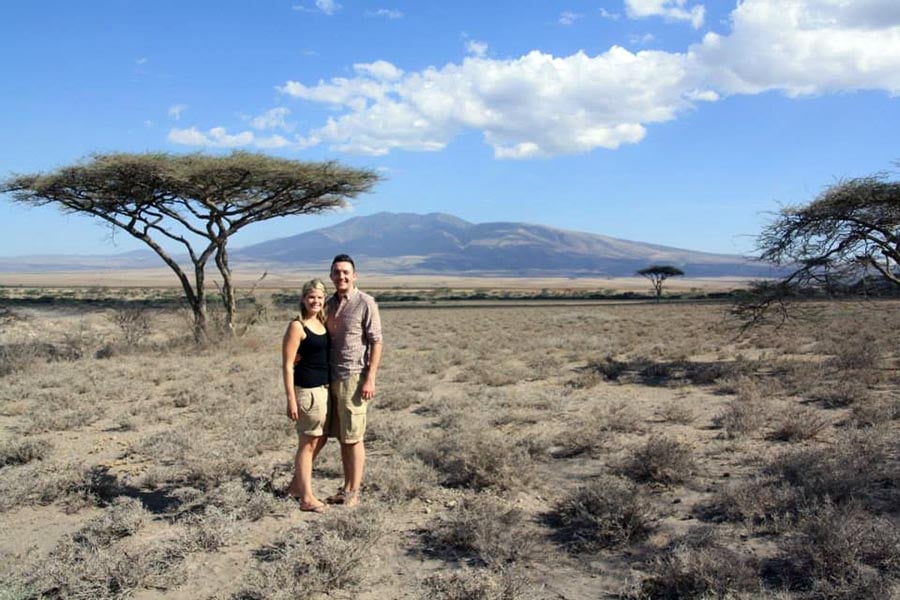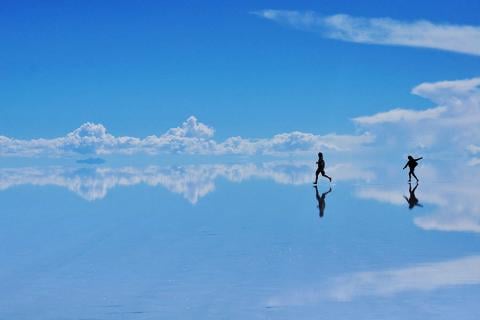
Santiago to Lima: a 4 week overland trip
I had longed to visit South America for many years, so when planning my trip, the sights at the top of my wish list were; the ancient Inca ruins of Machu Picchu in Peru; the Salar de Uyuni (world’s largest salts flats) in Bolivia and the Atacama Desert in Northern Chile.
Luckily these 3 countries all border each other and after some research, I had found the perfect route from Santiago to Lima, which you can travel overland in about 4 weeks.

Preparation – learn some basic Spanish
Having travelled a lot in South East Asia, I was used to getting around only speaking English, but South America is a different story. Knowing some basic Spanish makes life a lot easier, so I downloaded a ‘teach yourself Spanish app’ and spent months leading up to the trip learning as much as I possibly could. I would recommend this to anyone planning a trip to Latin America, as outside of the large cities, very few people speak English and the basic phrases I did pick up, saved us time and money on a number of occasions.
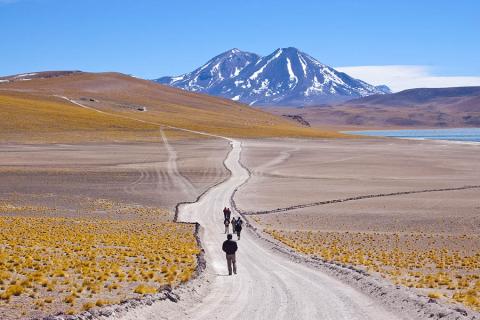
Book an ‘open-jaw’ ticket
To get the most out of the trip, I booked an ‘open jaw ticket’ which flew into Santiago and then out of Lima. It often doesn’t cost any more than a straightforward return, but you have the bonus of saving time and money by not having to return to the starting point. Round the world tickets can easily be arranged with these ‘surface sectors’ included.
Travelling overland means you don’t miss out on anything and you’re more likely to encounter the locals and see the country from a different perspective. Time and distance is obviously a factor and I had prepared myself for a number of long bus journeys, which are inevitable when travelling overland in South America.
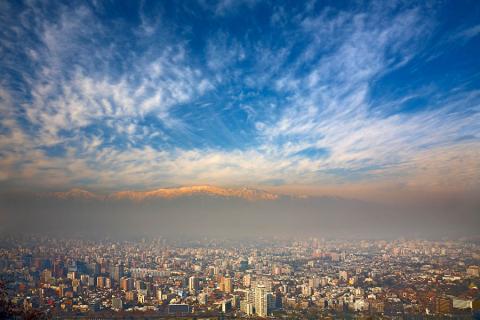
Beginning in Santiago
My wife and I started off in Santiago, the capital of Chile. The city’s stunning backdrop is the Andes mountain range and after a day spent exploring, we took the Pan-American Highway north to La Serena.
This beautiful little town is close to the Mamalluca Observatory – the reason for our visit; the skies in northern Chile famously offer some of the best conditions for star gazing and the view that awaited us that night did not disappoint.
San Pedro de Atacama and the Atacama Desert
Heading north through the Atacama Desert to San Pedro de Atacama, we reached the main tourist hotspot of the area. I recommend staying a couple of nights here so you can take a few different trips to the see the main highlights; Vale de la Luna, Los Flamencos National Reserve and the El Tatio Geysers.
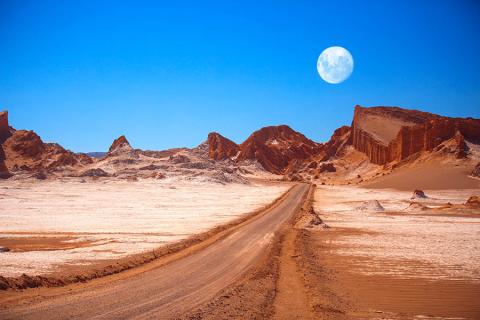
Crossing from Chile into Bolivia by 4WD tour
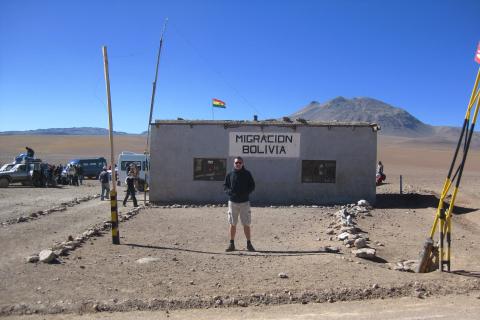
Bolivia was our next destination and from San Pedro de Atacama you can arrange a 3 day 4WD tour across the border to the small Bolivia town of Uyuni, through some of the most spectacular scenery found anywhere on earth. You could hire a private driver and guide for yourself, but the more affordable way is to get a group together and split the cost.
Volcanoes, flamingos and llamas
The Chile/Bolivia border is at an altitude of over 4,000m (as is much of the route to Uyuni), so you will need to take it easy the first day and try to acclimatise.
The first couple of days will be spent driving past volcanoes, multi-coloured lakes filled with flamingos, stunning landscapes dotted with llamas and bubbling geothermal pools. Accommodation along the way is pretty basic, but the views are most certainly worth it.
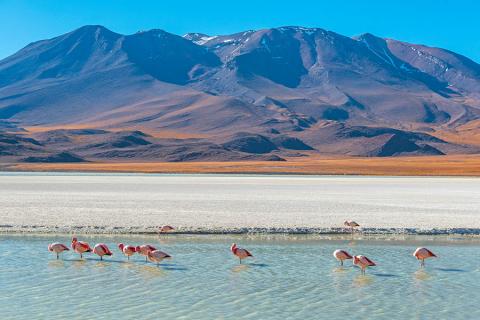
Encountering the world’s largest expanse of salt flat
The final day of our short tour was what I was most looking forward to. After breakfast at one of the salt hotels (made entirely of salt) we arrived at the edge of the world’s largest salt flats - it truly does have to be seen to be believed.
We drove for about an hour out into the middle of the flats to a small ‘island’ covered in large cacti. As far as the eye can see in every direction is the blinding, white, expanse of salt. It doesn’t sound like much, but it is a simply breathtaking sight -one I’ll never forget.

After taking the obligatory silly photos (the salt expanse casts a different perspective on everything), we finished up the tour in Uyuni.
Potosi and the old silver mines
To break up the journey to La Paz we stopped off in Potosi, which back in the 17th century was one of the richest cities in the world. The hills surrounding the city were once filled with silver and some locals still mine for what little is left. To get an idea of what it was like 300 years ago, you can join a tour and visit one of the last working mines, which is well worth an afternoon visit.
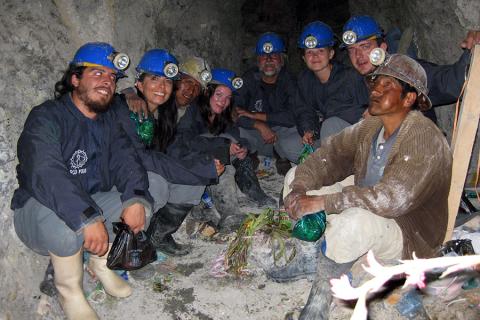
La Paz
It was then onto La Paz, the largest city of Bolivia, set in the middle of the high Andes. One of the main attractions is the witches market where you can buy potions, spells or even dead baby llamas (which are said to bring good luck if buried with the foundations of a new house!).
A cycle tour along the ‘death road’
We booked ourselves a small group cycling tour which although it sounds lovely, took us along a route called the ‘Death Road’! The ‘Death Road’ starts at about 4,500m altitude above the city and stretches for around 70km winding its way down treacherous mountain paths to the tropical forests in the foothills of the Andes. It’s known as the ‘Death Road’ due to the high number of vehicles that have gone over the edge. Fortunately, the government has built a new safer road and the old one is left for crazy tourists to cycle down and get some amazing photos along the way!
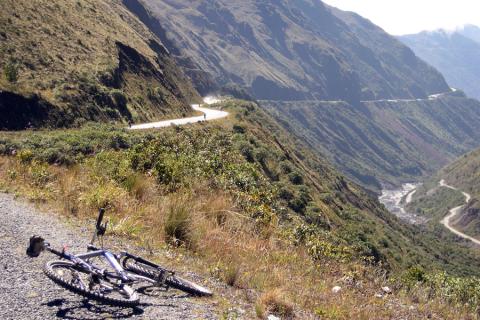
Lake Titicaca
Next, we headed for Lake Titicaca, which is located on the border between Bolivia and Peru. The lakeside town of Copacabana (not to be confused with the famous beach in Rio) is by far the best base to explore the area.
Two of the most popular things to do are; a boat trip to the famous floating reed villages where some locals still live today; and a day/overnight stay on the beautiful island Isla del Sol; dotted with Inca ruins, walking tracks and many spectacular views of the lake and surrounding mountains.
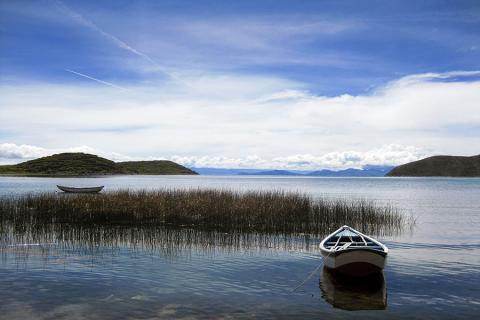
Into Peru
After 3 nights in Copacabana, we took a bus across the border to Puno, on the Peruvian shores of Lake Titicaca, before travelled on to the ancient Inca capital of Cuzco the following day.
Cuzco, the ancient Inca capital
Cuzco is the main tourist hub of Peru, so there is so much to see and do in the surrounding area including the chief attraction - the magical ancient citadel of Machu Picchu.
After a day spent shopping and relaxing in Cuzco, we set off for the Sacred Valley, halfway between Cuzco and Machu Picchu. This is a beautiful lush valley where you could spend a good few days. You could visit Pisac market, see different, impressive Inca ruins and even go whitewater rafting.
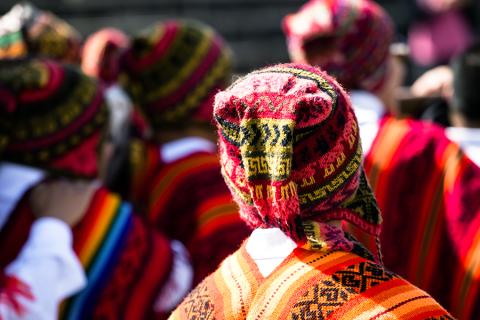
Hiking the Inca Trail
The next 4 days was the most eagerly awaited part of whole the trip for me - the 43km hike along the Inca Trail to Machu Picchu. Depending on when you want to visit, you will need to pre-book the hike well in advance, typically 2-6 months ahead as in recent years, trekking permits are limited. If you’re unable to secure a permit for the Inca Trail, you could consider the Salkantay Trek or the Lares Trek which are alternative routes.
The first 3 days are spent winding your way up and down the trail, past numerous Inca ruins and to a top altitude of over 4,000m. The views here are spectacular, but the final day is what everyone endures the tough, physical challenge and rough nights camping for; the sight of the sun rising over the majestic ruins of the once bustling citadel of Machu Picchu.
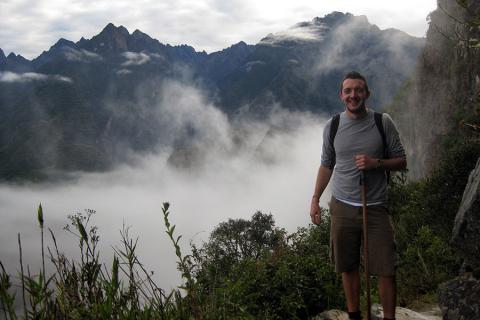
Spectacular sunrise over Machu Picchu
It was a perfect morning for our visit and the wait was 100% worth it! Sunrise over Machu Picchu is a simply breathtaking view. Arriving at first dawn, you avoid the main hordes of day travellers who arrive by train at around lunchtime, so the first trekkers often have the ruins to themselves for the first hour or so – a fantastic reward for the hike.
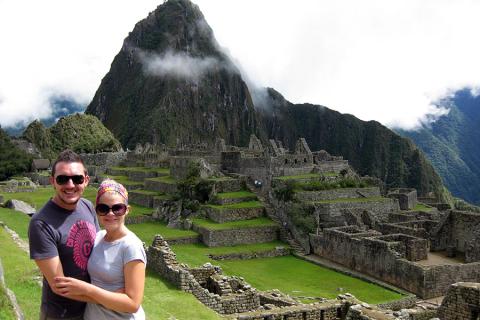
Colca Canyon and the majestic Condors
After a couple of nights recuperating in Cuzco, it was back on the road to Arequipa, Peru’s second largest city and entry point to the Colca Canyon. This is one of the world’s deepest canyons and nearly twice as deep as the Grand Canyon in the USA.
Here, we joined a 2 day/1 night trip that included a visit to some hot springs, a short hike into the canyon and a visit to the Cruz del Condor, where if you are lucky (we were), you’ll get to see the world’s largest bird of prey, the Condor.
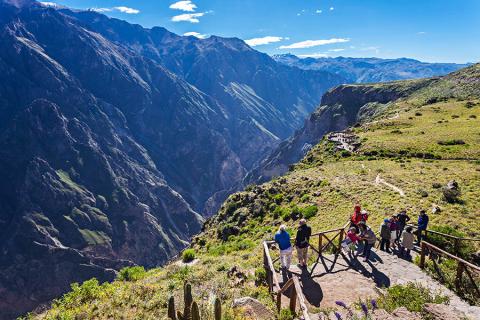
Fly from Arequipa to Lima or continue overland?
As we were nearing the end of our South American adventure, many travellers would fly straight to from Arequipa back to Lima, but we wanted to break up the 20-hour bus journey to see more of this beautiful country and we managed to fit in two more stops on the way.
Nazca lines
The first was a quick stop in Nazca, where you can find the Nazca lines; ancient geoglyphs etched into the desert sand around 2,000 years ago. These are best seen from the air and many pleasure flights operate all year round.
Huacachina – an oasis in the desert
The second was the village of Huacachina just outside of Ica. It’s a unique place built around a desert oasis and towering sand dunes - we were very pleased we made the stop. We spent the morning relaxing by the hotel pool and the afternoon sand boarding and speeding the dunes in a dune buggy.
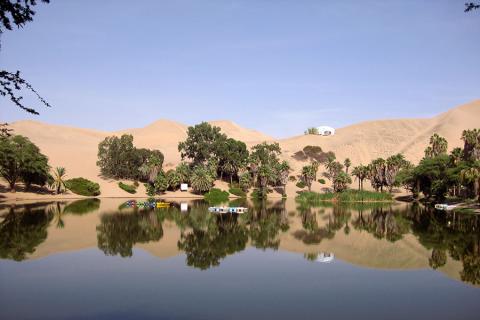
Finishing in Lima
Our final stop before heading home was Lima, the capital of Peru. It’s not one of South America’s most popular cities, but it’s still worth a night or two and I recommend staying in the pretty coastal district of Miraflores. There are some picturesque plazas, numerous markets and the main cathedral is very impressive – worth exploring before you board your flight back to the UK, which is about 15 hours.
How to do this trip
Flights
We can arrange for you an open jaw ticket into and out of Lima and Santiago, or if you’re travelling on a round the world ticket, ask us for a surface sector between these two cities. If you have a little longer you could surface further, perhaps to Quito in Ecuador or Bogota in Colombia. See some examples of multi-stop flights including Peru or Chile – and ask us for more ideas.
Getting around
Probably the easiest ways to explore South America independently is by bus and we can recommend and book suitable routes with different bus companies. The tickets we book are super flexible, and allow you to plan your costs by pre-pay but alter your routes online as you go along.

Small group tours
G Adventures offer a number of small group tours; their 21-day Southern Divide most closely matches our itinerary and takes you from Lima to Santiago in 21 days. Group tours are excellent value as they include all local transport, accommodation and some meals, plus services of a local guide.
If you’re a looking for a longer backpacking experience in South America, this overland tour Cordilleras: Lima to Santiago matches my route almost exactly. You’ll cover my itinerary in 35 days, again with most of your expenditure included.
Independent travel
If you’d like to see any of these places and travel in more comfort – we can easily tailor-make your holiday to include the highlights or include a few shorter tours in key places. Take a look at our trip ideas below.
Interested in visiting South America?
If you’d like to plan a trip here, plenty of our consultants have experience travelling through South America and can put together an itinerary to suit your style and budget. Just call us or request a quote by email to start planning your trip!

About the author Jeremy Bull
Travelling friend
Beginning his travels in 2003 after a Marine Geography degree, Jeremy plunged in feet first and chose 2 months in India as his first stop. After conquering his culture shock, he felt ready to take on the rest of the world from south east Asia, Australia, NZ Fiji and the USA. Returning home he set to work planning his next trip to China, Indochina and South America. He joined Travel Nation in 2012 after 2 years at our sister company as a South America specialist. When not baking incredible cakes, going for a run or planning his next trip with his wife, Jeremy currently works in our Finance team.

